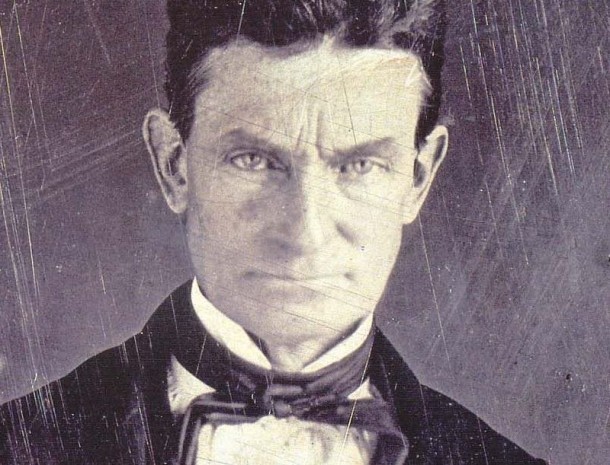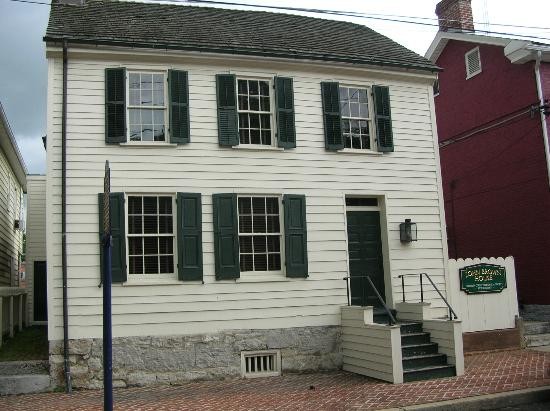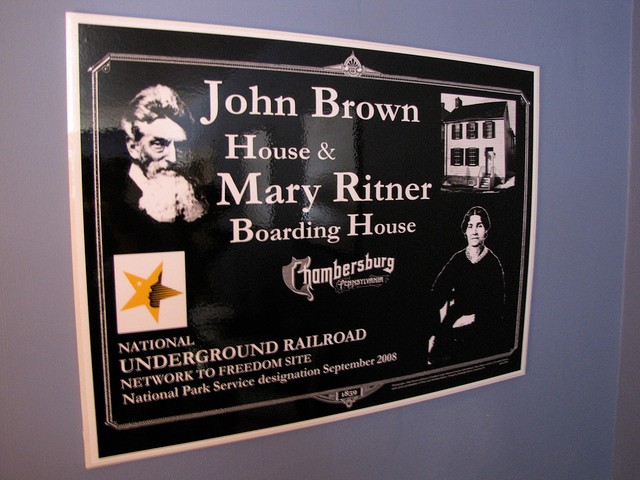Ritner Boarding House-John Brown
Introduction
Text-to-speech Audio
Images
John Brown in latter years wearing a long beard that he grew in order to disguise himself somewhat after the killings in Kansas

John Brown

The John Brown House/Mary Ritner Boarding House

Mary Ritner Boarding House as John Brown's Headquarters and Underground Railroad

Backstory and Context
Text-to-speech Audio
Born on May 9, 1800, in Torrington, Connecticut, John Brown was a passionate and ardent civil rights activist and abolitionist. He worked with the Underground Railroad and the League of Gileadites. He believed in using any means necessary, including violence, to end slavery. He led a raid on the federal armory at Harper's Ferry, VA (now WV) hoping that his actions would incite slaves to rebellion and action. His endeavor was unsuccessful, he went to trial, and was executed on December 2, 1859.
Brown was heavily influenced by his father, a Calvinist who believed abhorred the concept of slavery. When Brown was a young boy, he witnessed a slave boy being beaten, and the experience shaped him into the abolitionist he became.
He was twice married and had many children from both relationships. The families experienced financial difficulties and moved from place to place often. Brown was instrumental in his assistance with the Underground Railroad and gave land to free African-Americans. This led Brown to establish the League of Gileadites, whose goal was to protect Black citizens.
Brown eventually met and befriended Frederick Douglass in 1847, and in 1849 moved to North Elba, New York which was a Black community. In 1855, Brown and five of his sons had moved to Kansas. Because of his belief in using violence as a means to end slavery, he and several of his men killed five pro-slavery settlers.
Brown and his sons fled back east where the family patriarch devised a new plan- form a free and well-armed Black community in the mountains of Maryland and Virginia. In support of this vision, Brown began planning the attack on the federal arsenal at Harper's Ferry to secure the quantity of weapons that would be required to put his plan in motion. During the summer of 1859, Brown (under the alias of Isaac Smith) stayed at the Mary Ritner Boarding House in Chambersburg, PA.
During that summer, Brown was in and out of the house. His supporters stayed to receive shipments of arms labeled as mining tools delivered by the railroad. These weapons were stored in the Oaks and Cauffman Warehouse on nearby North Main Street until they could be transported to the Kennedy Farm near Harper's Ferry.
On August 16, Brown met with Frederick Douglass in Chambersburg. Douglass was there under the guise of delivering a speech, and Brown was dressed as a fisherman to disguise his identity. Once Brown relayed his planned attack on Harper's Ferry to Douglass and attempted to persuade him to join the fray, Douglass refused.
Brown left the Ritner Boarding House on October 9, 1859 and moved on to Harper's Ferry, from whence he would never return. This building was miraculously spared in the Burning Of Chambersburg and served a variety of purposes over the years. In 1971, Pennsylvania Historic and Museum Commission acquired the property and opened this museum.
